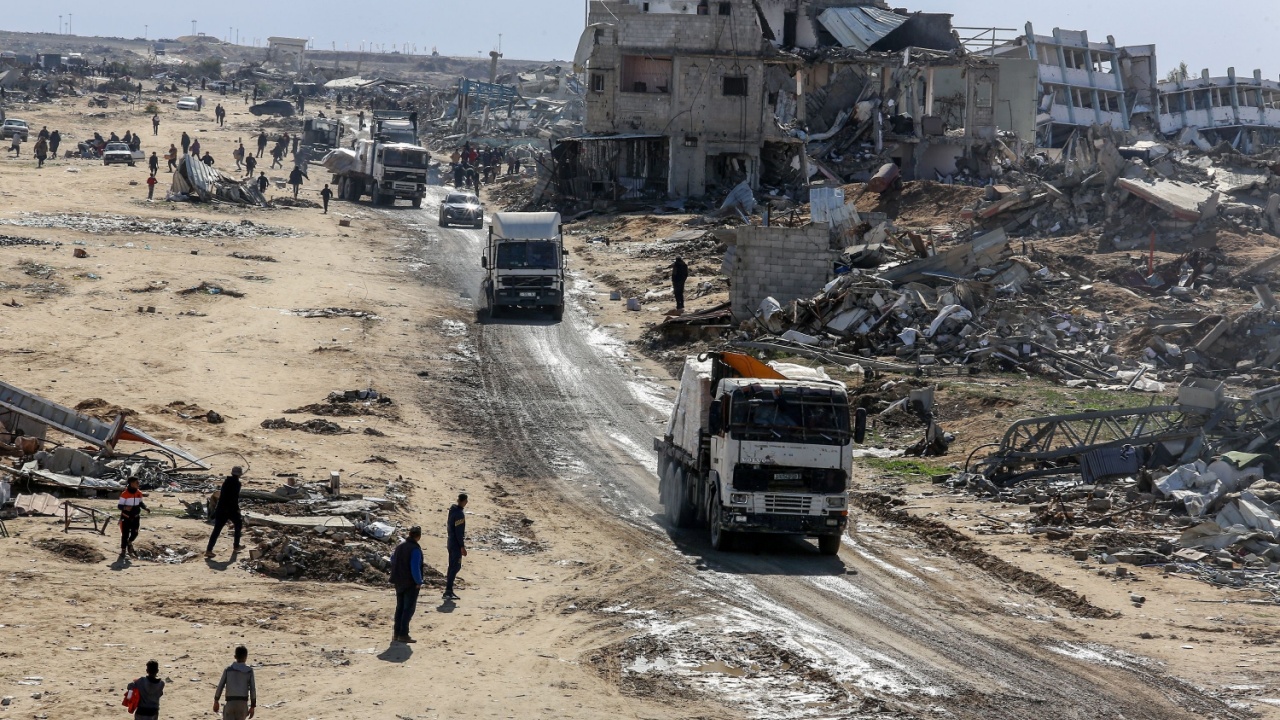
Israel’s Gaza War Faces an Inflection Point
The IDF’s exhaustion and Hamas’ dogged survival points to the likelihood of a Gaza ceasefire in the next two months.
The Israeli Defense Forces (IDF) continue to expand operations in Gaza. On July 20, the IDF told Gazans to evacuate an area near the coastal town of Deir al-Balah. This town was built around a refugee camp established for Palestinians who fled Israel in 1948. Hamas continues to rule Deir al-Balah, despite more than 650 days of war in which the IDF has operated in around 70 percent of Gaza. The IDF’s decision to focus on Deir al-Balah represents a new attempt to pressure Hamas into a ceasefire deal. Hamas and Israel have not been able to agree to a deal in weeks of talks in July.
Israel’s IDF Chief of Staff Lt. Gen. Eyal Zamir is trying to wage a complex war without a clear political strategy from above. There is no clear way to replace Hamas governance in the Strip. The Israeli government opposes the Palestinian Authority’s rule over Gaza from the West Bank. As such, a power vacuum is likely to occur. In Gaza, the IDF has asked civilians to leave areas where the IDF is operating. This has resulted in relocating them all to areas under Hamas control. This area is shrinking now, as Hamas clings to a small number of places on the coast, such as Deir al-Balah.
Israel’s war against Hamas in Gaza has dragged on for 21 months. The war began with a brutal Hamas attack on Israel in which more than 1,200 people were massacred and 251 taken hostage. Today, fifty hostages remain in Gaza. For Israel’s generals, the official goal of the war is to return the hostages. How that will happen is not clear. In general, the IDF has only been able to free a handful of hostages through special forces raids.
Most hostages have returned in two deals: one in January 2025 and one in November 2023. The United States has supported a hostage deal, and Qatar and Egypt have tried to mediate. Qatar hosts Hamas political leaders, allowing it to host talks while Hamas is in close proximity. With Hamas losing many of its commanders in Gaza, it appears that Hamas political leaders in Qatar hold most of the sway over future decisions.
For Hamas, the war has generally been fought as a waiting game. After the initial attack on Israel, Hamas fighters mostly hid underground in tunnels. Even in areas that Israel has reduced to rubble through ground operations, Hamas continues to return. In Beit Hanoun, a town in Gaza near the Israeli border, Hamas killed five IDF soldiers in early July 2025. This shows that Hamas still operates in even areas with a heavy IDF presence.
In many cases, Hamas fled areas and then returned later. For instance, the IDF has continued to eliminate Hamas commanders in Jabaliya and Daraj Tuffah in northern Gaza in mid-July 2025. However, many of those commanders ran units of Hamas battalions that the IDF had assessed were defeated back in November and December 2023. Hamas has thus demonstrated its ability to continue rebuilding these units.
How does Hamas get the recruits? The fact that around 2 million civilians in Gaza continue to live under a small area of Hamas rule in central Gaza means that Hamas can continue to recruit fighters. Hamas only needs to recruit a small percentage of young men to continue to fight. Most of Gaza’s population is young, with around half under the age of 18. As such, Hamas has a ready pool of potential recruits.
While Hamas, despite losses, continues to subsist in parts of Gaza, the IDF faces growing challenges. According to reports in Israeli media, IDF reservists are facing increasing fatigue after such a long war. This is Israel’s longest war, and it has been grueling. Reservists have been called up for months on end, with some spending most of 2024 in the army and then being called up again in April and May 2025.
Israel also faces recruitment challenges for the IDF because 80,000 ultra-Orthodox Jewish men are exempt from army service for religious and political reasons. This is the equivalent of several divisions’ worth of combat soldiers. The IDF brass appear to be arguing for expanding operations in Gaza in July and early August, and then drawing down troops.
This means that July and August present another opportunity for the war in Gaza to end. There are many questions about what a deal might look like. Hamas will try to remain in power. It has fought for 21 months without surrendering or splintering. No group in Gaza has emerged to challenge Hamas rule.
While Israel has backed a small militia in Gaza since April, it is not clear if this group controls more than a small area in Rafah in southern Gaza. The United States has also backed a humanitarian initiative called the Gaza Humanitarian Foundation, which distributed food at several sites in Gaza. It distributes around two million meals a day, according to its daily announcements.
The international community has refused to work with GHF. The area around the humanitarian sites has also been dangerous for Gazans who seek food aid. Reports claim aid-seekers have been killed in large numbers. The IDF and GHF dispute these claims. However, it is not disputed that 20 people were killed in a stampede at one site on July 15. This has led the UK and 27 other countries to call for an end to the war in Gaza.
The global consensus is that the war in Gaza should end. The United States has backed a ceasefire and sought to bring Israel and Hamas together via talks in Qatar. Other nations in the Middle East, like Saudi Arabia, want the war to end. Surveys show that 74 percent of Israelis would also like to see a conclusion to the hostilities. With the IDF raising concerns about reservist fatigue, it will be crucial for the war’s goals to be achieved or for a deal to be reached.
About the Author: Seth Frantzman
Seth Frantzman is the author of Drone Wars: Pioneers, Killing Machine, Artificial Intelligence and the Battle for the Future (Bombardier 2021) and an adjunct fellow at The Foundation for Defense of Democracies. He is the acting news editor and senior Middle East correspondent and analyst at The Jerusalem Post. Seth has researched and covered conflict and developments in the Middle East since 2005 with a focus on the war on ISIS, Iranian proxies, and Israeli defense policy. He covers Israeli defense industry developments for Breaking Defense and previously was Defense News’ correspondent in Israel. Follow him on X: @sfrantzman.
Image: Anas-Mohammed / Shutterstock.com.
The post Israel’s Gaza War Faces an Inflection Point appeared first on The National Interest.

















